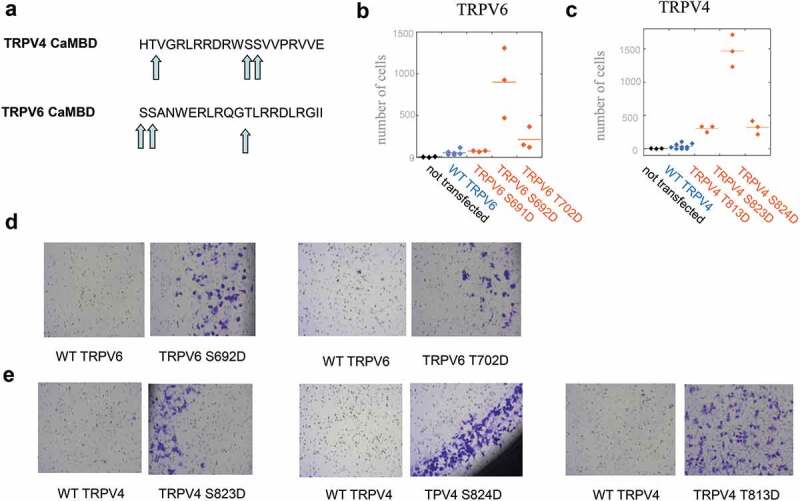Figure 2.

Mutations in TRPV4 and TRPV6 CaMBDs confer increased invasive properties to SW480 cells. (a) TRPV4 and TRPV6 CaMBD domains, with serine/threonine residues as potential phosphorylation sites (arrows). (b–c) Invasion assay on TRPV6 (b) and TRPV4 (c) CaMBD mutants mimicking constitutive phosphorylation. The number of cells passing through Matrigel after 22 h invasion (out of 20,000 seeded cells) is indicated. For TRPV4, bicistronic vectors allowing selection of transfected cells were used. A common reference (non-transfected cells) is indicated in (b) and (c) (black). (d–e) Typical images on cells harvested in invasion assays, on Corning BioCoat Matrigel invasion chambers with 8 μm pores, for TRPV6 (d) and TRPV4 (e). Images shown correspond to experiments with non-bicistronic vectors, both for TRPV6 (b) and TRPV4 (see SI).
